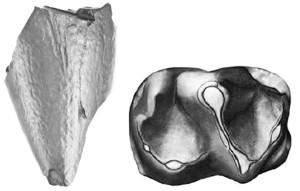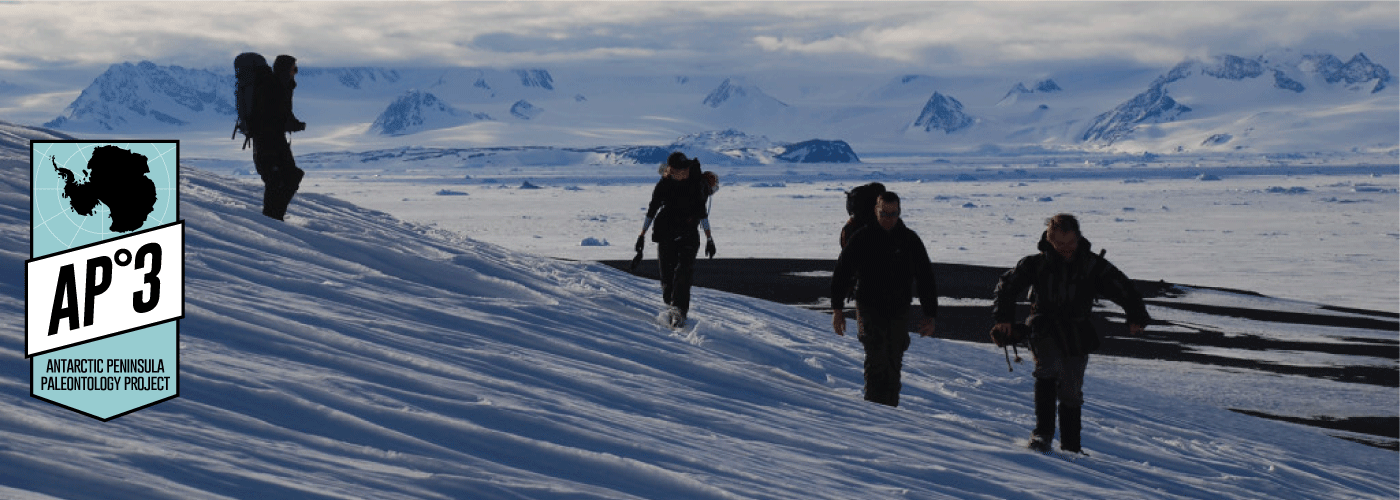
Paleogene mammal teeth from Antarctica studied by Ross MacPhee and collaborators. The purported sloth tooth is on the left (in front view), and the Antarctodon tooth is on the right (in top view). Images from papers by MacPhee and Reguero (2010) and Bond et al. (2011), respectively.
AP3 Principal Investigator Ross MacPhee has been searching for fossils in the Antarctic Peninsula region since 2007. Among his most notable works on Antarctic fossils are analyses of Eocene-aged (~45 million-year-old) mammal teeth from the La Meseta Formation of Seymour Island. The first of these studies, conducted in collaboration with Argentine paleontologist Dr. Marcelo Reguero, reexamined a tooth that had previously been identified as that of a sloth. Ross and Dr. Reguero determined that this tooth does not possess any characteristics that are unique to sloths, and as such, that it cannot be confidently assigned to that mammal group. The second study, undertaken with Dr. Reguero and two other Argentine colleagues, named Antarctodon sobrali, a new genus and species of astrapothere, on the basis of another isolated tooth. Astrapotheres are hoofed mammals that are otherwise known only from South America; consequently, the occurrence of Antarctodon on Seymour Island shows that these creatures dispersed between South America and Antarctica during the early part of the Cenozoic Era, probably over a continuous land bridge or a series of closely-spaced islands. The technical papers describing the results of these studies were published in the scientific journal American Museum Novitates during 2010 and 2011, respectively.
Ross is also sampling a wide range of fossil mammals and birds for the protein collagen, which survives over time much better than DNA and, like the latter, can be used to help reconstruct evolutionary relationships (in this case by determining the sequence of its amino acids). Recently, other researchers claimed to have identified the protein myosin in an 80 million-year-old dinosaur! This is an amazing find, but it needs corroboration, because contamination is always a possibility. Ross plans to determine if any proteins are contained in (and definitely belong to) vertebrate fossils that we collected on the 2016 expedition.
